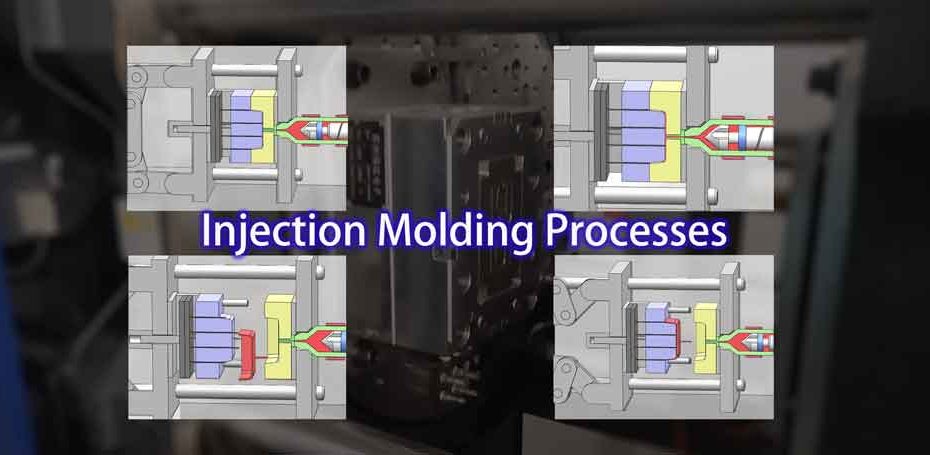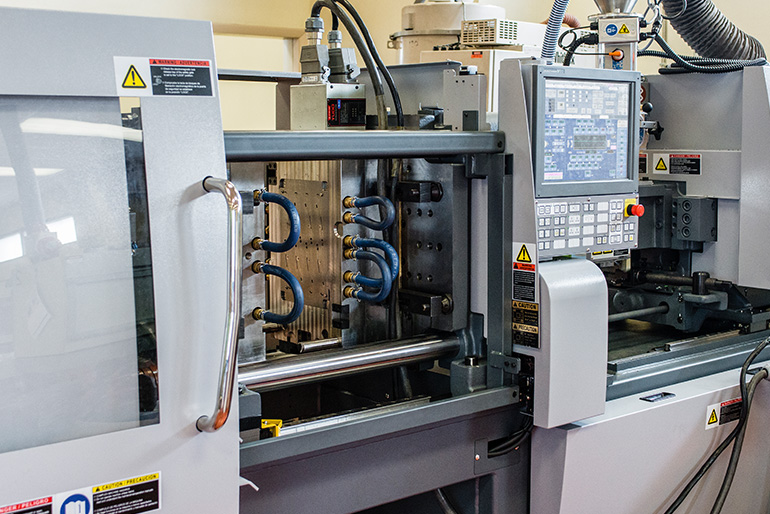The Impact of Plastic Injection Molding on Decreasing Production Costs and Waste
The Impact of Plastic Injection Molding on Decreasing Production Costs and Waste
Blog Article
Recognizing the Essentials of Plastic Injection Molding Processes
Plastic injection molding offers as a cornerstone of modern-day manufacturing, providing a systematic strategy to creating complex parts with accuracy. Checking out these crucial aspects can disclose how even small modifications can lead to considerable renovations in production results, elevating concerns regarding the potential for technology in this recognized process.
What Is Plastic Injection Molding?
Plastic shot molding is a commonly made use of manufacturing procedure that transforms polycarbonate and thermosetting materials into precise and intricate forms. This strategy is preferred for its capability to create high volumes of the same parts with exceptional accuracy, making it a vital method in numerous sectors, consisting of automotive, durable goods, and medical gadgets.
The procedure includes melting the selected plastic product and infusing it into a mold under high pressure. The mold, made to the specifications of the wanted component, allows the liquified plastic to materialize as it cools down and strengthens. As soon as the product has actually set, the mold and mildew is opened, and the ended up element is ejected.
Plastic shot molding uses a number of advantages, including minimized waste, uniformity in manufacturing, and the ability to include elaborate layouts that may be challenging with various other manufacturing approaches. In addition, it supports a wide series of products, each providing one-of-a-kind homes that can be tailored for details applications. As industries proceed to innovate, plastic shot molding remains at the forefront, making it possible for the advancement of innovative products that meet developing consumer needs.
The Injection Molding Refine
The injection molding process is an innovative strategy that involves numerous key phases to produce high-quality plastic parts. Originally, plastic pellets are fed into a heated barrel where they are melted right into a viscous fluid. This molten plastic is then injected under high stress right into a precision-engineered mold and mildew, which forms the material into the wanted form.
Once the mold and mildew is filled, the plastic is permitted to cool and solidify, taking the form of the mold tooth cavity. Air conditioning time is important, as it impacts the cycle time and the last homes of the shaped part. After sufficient cooling, the mold opens up, and the completed part is expelled making use of ejector pins.

Products Made Use Of in Shot Molding
Various materials can be utilized in the injection molding process, each offering one-of-a-kind homes that satisfy certain applications. The most generally used products include thermoplastics, thermosetting plastics, and elastomers.

Thermosetting plastics, like epoxy and phenolic materials, undertake a chemical adjustment during the healing procedure, leading to a stiff, inflexible framework. These products are ideal for applications calling for high warmth resistance and architectural stability, frequently made use of in vehicle components and electrical insulators.
Elastomers, consisting of silicone and rubber-based products, give versatility and durability. Their special residential or commercial properties make them appropriate for applications that demand flexibility, such as seals and gaskets.
Furthermore, specialized materials like bio-based plastics and compounds are getting grip for their environmental benefits and enhanced performance qualities, broadening the scope of injection molding applications in different industries. Understanding the homes of these materials is vital for selecting the ideal type for particular tasks.
Benefits of Shot Molding
Injection molding stands out as an extremely effective production procedure that offers countless advantages for producing intricate get rid of accuracy. Among the most considerable benefits is the capacity to produce complex designs that would certainly be difficult or challenging to attain with other techniques (Plastic Injection Molding). The procedure permits comprehensive attributes and tight resistances, making certain top quality parts
Additionally, injection molding is understood for its rapid production capacities, making it a perfect option for high-volume manufacturing. When the mold is developed, parts can be produced promptly, minimizing preparations and boosting overall performance. This effectiveness not only decreases manufacturing costs but likewise gives an one-upmanship in the market.
The convenience of materials utilized in shot molding further improves its allure. A vast array of thermoplastics and thermosetting polymers can be employed, allowing suppliers to select materials that best meet their particular requirements, consisting of heat, versatility, and stamina resistance.
Additionally, the process minimizes waste, as excess product can usually be reused and recycled. This sustainability element adds to a lowered ecological effect, making shot molding a liable production selection. On the whole, the advantages of shot molding make it a favored technique for several sectors.
Variables Affecting Item High Quality
While various aspects can affect product quality in injection molding, comprehending these aspects is vital for achieving optimum results. Key aspects include material option, processing specifications, and mold and mildew layout.
Product choice plays an important duty, as different polymers display unique properties their website that affect flowability, toughness, and thermal security. Inadequate material selection can lead to problems such as warping or insufficient dental filling.
Handling parameters, including pressure, temperature level, and cycle time, should be thoroughly managed. Variants in these settings can result in variances partially dimensions and surface area coating. For example, excessively high temperature levels may trigger deterioration of the polymer, while inadequate stress can cause short shots.
Mold and mildew style is equally crucial, as it establishes the circulation of the molten plastic and the cooling procedure. Badly designed mold and mildews might bring about unequal cooling prices, resulting in residual stresses and dimensional errors.

Final Thought
To conclude, plastic injection molding works as an important production process that enables the reliable manufacturing of high-quality elements. Mastery of the injection molding process, consisting of the understanding of materials and the influence of different elements on item top quality, is important for achieving optimal outcomes. The advantages of this technique, such as cost-effectiveness and style versatility, additional highlight its importance across multiple sectors, strengthening its condition as a recommended selection for high-volume production.
Plastic shot molding offers as a foundation of contemporary production, giving a methodical approach to generating complicated elements with accuracy.Plastic shot molding offers a number of advantages, consisting of decreased waste, consistency in production, and the capacity to incorporate elaborate styles that might be testing with other making approaches (Plastic Injection Molding). As sectors proceed to innovate, plastic injection molding remains at the leading edge, enabling the advancement of advanced items that meet progressing customer needs
The shot molding procedure is a sophisticated technique that includes numerous key stages to produce premium plastic components.In conclusion, plastic injection molding offers as an essential production process that makes it possible for the efficient manufacturing of top quality elements.
Report this page